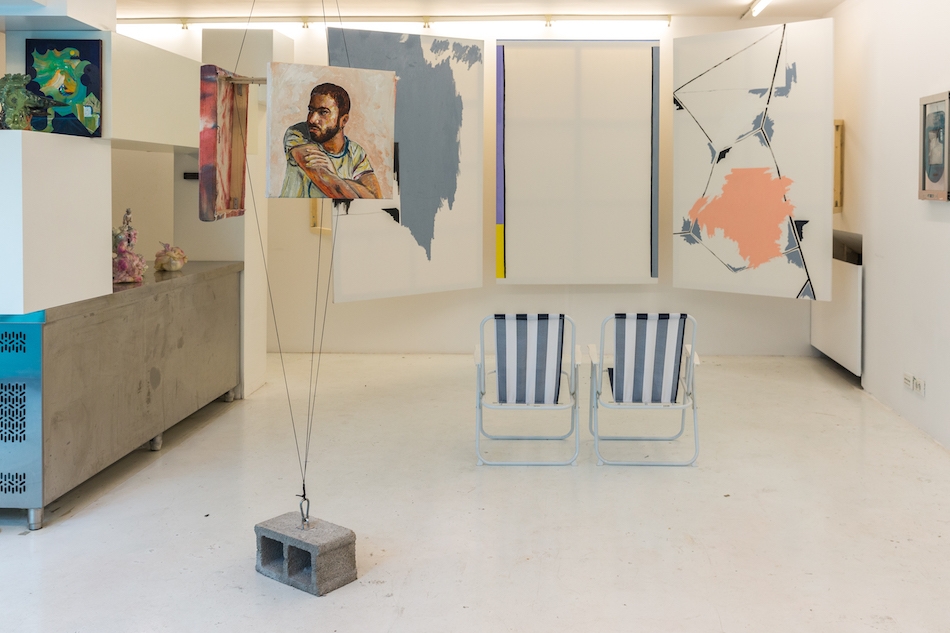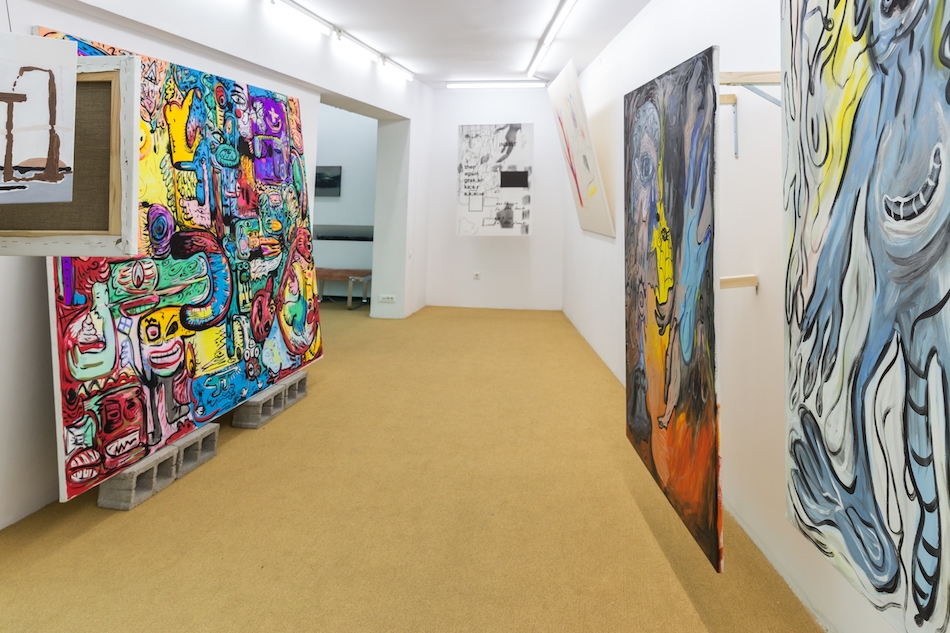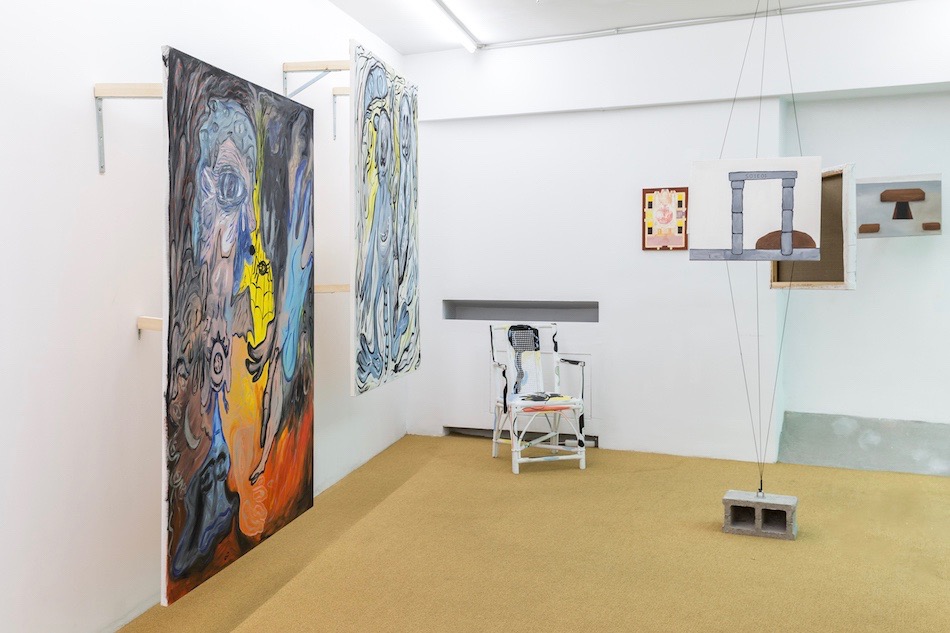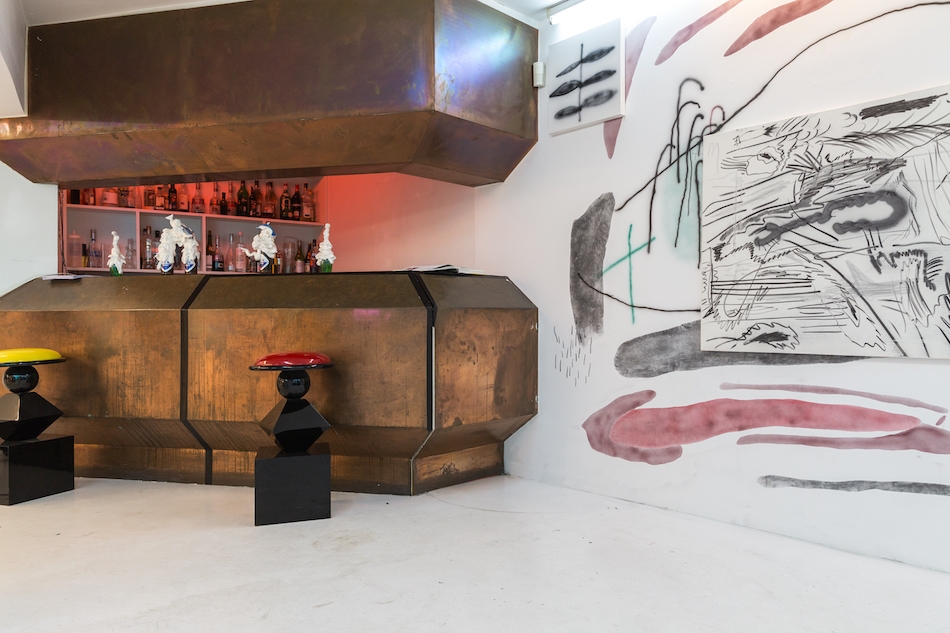Group show
Athens and its periphery in regards to contemporary painting
November 23, 2017–January 20, 2018The Breeder Feeder & Playroom
The Breeder is pleased to present “Athens and its periphery in regards to contemporary painting” organised by Hugo Wheeler.
Exhibiting Artists: Vaggelis Choursoglou, Dimitra Dimopoulou, Krini Dimopoulou, Vassilis H, Stelios Karamanolis, Navine Dossos, Aristeidis Lappas, Orestis Lazouras, Lupo, Lukas Panek, Anastasia Pavlou, Maria Toumazou, Amalia Vekri, Vincent Verghoff, Marina Xenofontos.
Over recent years, Athens has experienced cultural momentum despite being in financial and political upheaval. Athens and its Periphery in Regards to Contemporary Painting highlights existing practices and looks at the inspiring and creative production that is thriving across the city and well beyond its boundaries. This exhibition acts as a survey of exciting new practitioners developing in Athens and its surroundings.
The artists exhibited share experiences both from within Greece and internationally, creating a unique context in the place we live in, producing wider context yet still using a unique vernacular language. In addition to the recent influx of cultural practitioners that pass through or have decided to make Athens their home creates a synergy that is unparalleled to other places at this time. A unique new generation is unfolding and the momentum created by this movement is undoubtedly felt across the city and beyond. This force has grown through a rich grass-roots culture; many of the artists exhibited here have been involved in or created their own project spaces, show rooms, zines, publications and forums. This network of collective ‘do it your self’ enterprises creates innovative methods of living within periphery culture. Additionally the interconnectedness of geographic locations like Thessaloniki, Mykonos, Nicosia, Amsterdam or London is aided by a burgeoning online presence, and invitations between project groups to collaborate and show each others work makes us question where the centre ends and the periphery begins.
A Historical parallel lies in Peggy Guggenheim’s 1942 gallery of Art of this Centenary in New York. Moving from London and opening in a progressive yet uncertain climate was an intriguing move; this new frontier consisted of young American artists emerging after years of economic depression during the 1930s, or European émigrés seeking greener pastures. Guggenheim would annually exhibit the Spring Salon for Young Artists. These shows would act as a survey to present the best of this new and exciting generation ‘serving the future instead of the past’. Its inaugural show (1942) exhibited Jackson Pollock, Robert Motherwell, and Piet Mondrian.
The gallery commissioned Frederick Kiesler to design the space. He worked under two key frameworks. Firstly, he organized artworks within three-dimensional space as part of a total environment, rather than simply hanging them along two-dimensional walls. Secondly, he aspired to ‘maximise the perception of art’; one specific motif that illustrates these principles being the arm, extending the artwork away from the wall, actively presenting it to the viewer. Athens and its Periphery in Regards to Contemporary Painting takes influence from this model, making this link to emphasise the similarities between the two disparate places in an allied promising time. Athens and its Periphery is pushing creative innovation in promising times.




